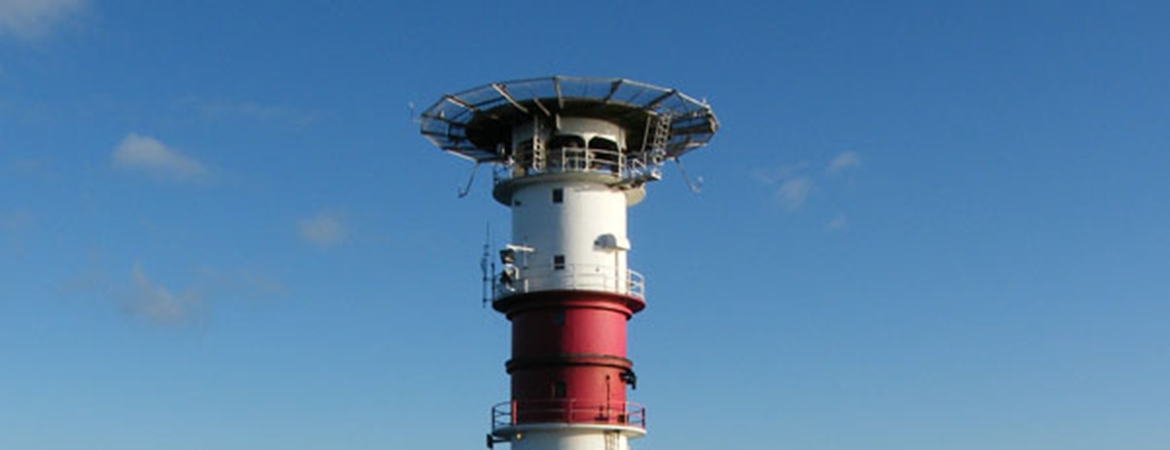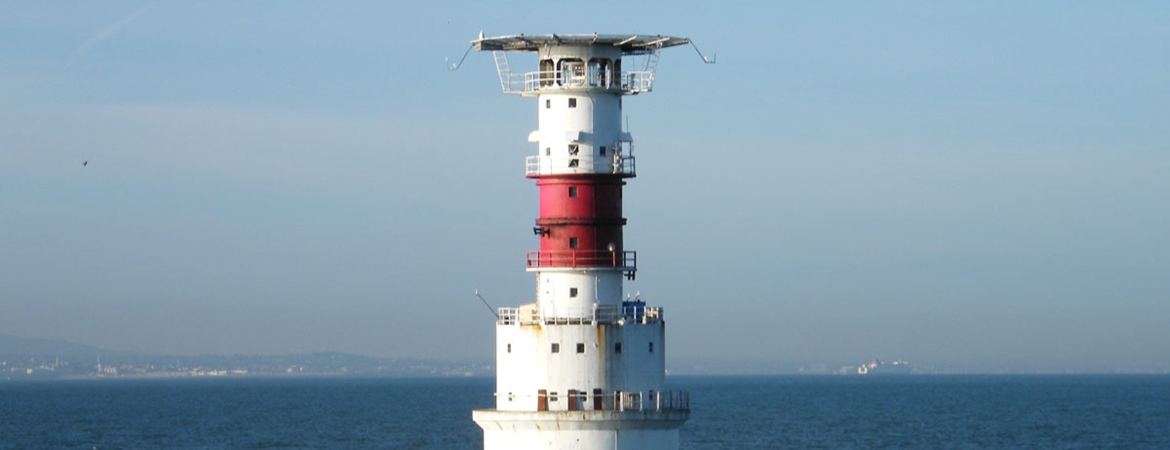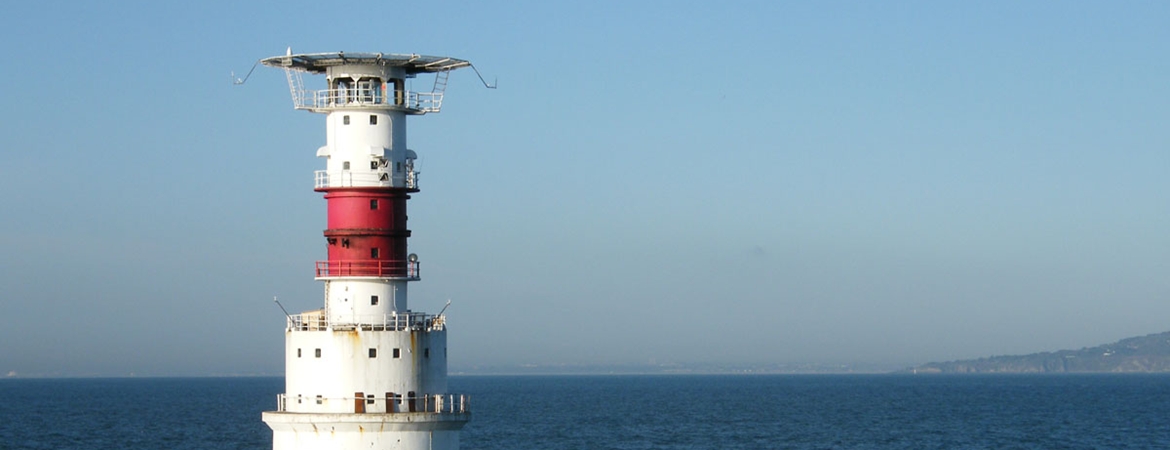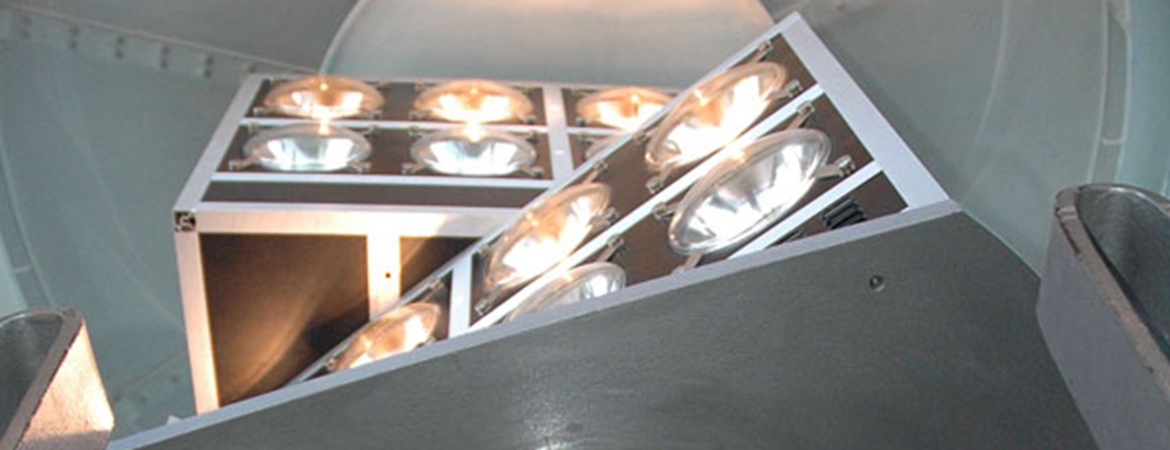In August 1810, it was decided by the Corporation for preserving and Improving the Port of Dublin (the Ballast Board), later to become the Commissioners of Irish Lights, that it would be possible to maintain a floating light on the Kish Bank. The following year they purchased the Galliot Veronia Gesina of 103 tons, engaged a crew and fitted out the vessels as a floating light. The light was first exhibited on 16th November 1811. In foggy weather a gong was sounded but when the Holyhead Packet was expected an 18 pounder gun was fired.
In 1842 an attempt was made to erect a lighthouse on the Kish Bank using screw piles invented by Alexander Mitchell but the piles were destroyed in November of that year by a severe gale and the project was abandoned.
In November 1949 a radiobeacon was put into operation on this station and five years later the first of the all electric lightvessels Gannet was placed on the station. A racon was fitted in 1960. From 1946 the fog signal which gave one report every 2½ minutes was accompanied by a brilliant flash in hours of darkness during foggy weather.
In 1954 the colour of the lightvessel was changed from black to red and the character changed to Fl W 60 seconds with a flash length of 0.4 seconds. In 1956 the character was changed to a double flash White every 30 seconds. From November 1957 the light was exhibited in daylight during conditions of poor visibility. In 1962 the daymarks on the Kish Lightvessel were discontinued.
Following the International Lighthouse Conference which was held at Washington in 1960, the Commissioners became interested in the possibility of using a platform similar to those used as oil rigs for lighthouses purposes and they asked nine engineering firms to submit design tenders for such a lighthouse. Various designs were submitted and that of Messrs Christiani & Nielsen Ltd, was eventually selected. This design was not for a steel platform like an oil rig but a concrete lighthouse designed to last for at least 75 years, on the lines of similar lighthouses in Sweden.
Model tests were carried out in the Technical University in Copenhagen and at the De Voorst laboratory in Holland to check the design, stability, and foundation bearing pressures using samples of sand from the Kish Bank, and under maximum anticipated wave conditions. In order to meet Irish Sea weather conditions the structure had to be more than twice as big as the largest of similar lighthouses built by the Swedish Board of Shipping and Navigation.
Test borings had been made during 1961 and also a seismic survey which indicated that there is about 300 feet of sand at the site of the proposed lighthouse on the Kish Bank.
It was planned to build the lighthouse of reinforced concrete in the form of a circular caisson inside which would be a tower which, when floated to its site, would be telescoped up to its full height. The tower would contain the lantern, keepers' quarters, storage, generator, radio equipment, etc.
Construction work commenced at Dun Laoghaire in July 1963. A level site was prepared in the inner harbour at Dun Laoghaire and this was surrounded by a wall of sheet piling to form a cofferdam within which the base was to be constructed. Unfortunately when the base was floated off the site and allowed to settle again it grounded unevenly and this caused damage which was increased when, during a storm in December 1963 the caisson was sunk. When it was raised it was decided to cover the top with a thick concrete slab and to use it as a buoyant base on which to build a new structure.
The construction of the lighthouse was soon under way again, the bottom portion of the lighthouse being built as a caisson with an outside diameter of 104 feet and a three feet thick base slab. There are three concentric walls of varying heights, the greatest being 91 feet. These walls are interlocked by twelve radial walls forming sections which were flooded as required during the sinking operation. The tower is a self contained unit of twelve floors built within the caisson. It is 100 feet high and surmounted by a 32 feet diameter helicopter landing platform which is surrounded by a safety net.
In November 1964 the caisson was towed to St. Michael's wharf where the construction was almost completed and on the evening of 29th June 1965, it was towed out of Dun Laoghaire Harbour to the Kish Bank and later sunk on a level platform of stones which had previously been prepared by divers and buoyed by the Irish Lights Tenders.
The operation of raising the tower was completed on 27 July 1965. This was done by flooding the lower caisson with water causing the tower to float up some 54 feet 6 inches and the final lift was achieved by jacks and pre-stressing cables built into the lip of the base. These cables allowed for small corrections to ensure the tower was vertical. The water was then pumped out and replaced by 18,000 tons of sand and topped with concrete. The space between the tower and the caisson is sealed with concrete. The tower is white with a red band.
On 9 November 1965 the Kish Lightvessel was withdrawn and replaced by Kish Lighthouse whose equipment includes a catoptric lantern giving a two million candlepower beam with a character of Gp Fl (2) W every 30 seconds giving a range of 27 nautical miles which can be increased to three million in fog; a racon or radar responding beacon, established in 1968, which shows on the radar screens of vessels as an unmistakable and identifiable blip; and a radiobeacon.
On 9 May 1974 the fog signal was changed from its explosive signal to a horn which sounds twice every 30 seconds. Stores can be landed by a hydraulically controlled crane mounted on rails which surround the tower level with the radio room. Inside the tower there is an electrically operated hoist for lowering or raising stores between the entrance deck level and the bottom of the tower through the central shaft.
On 7 April 1992 the lighthouse was converted to automatic operation and the Keepers were withdrawn from the station. The radiobeacon was discontinued at this time. The station is in the care of an Attendant and the aids to navigation are also monitored via a telemetry link from Irish Lights Dun Laoghaire.
On 29 February 1996 the character of Kish Lighthouse was changed to Fl (2) W every 20 seconds. This reduction in period from 30 seconds to 20 seconds was confirmed by user consultation as more appropriate for the recently introduced high speed ferries especially at this strategically important traffic waypoint.
On 11 January 2011, as a result of an aids to navigation review, the fog signal at Kish Lighthouse was permanently discontinued.











